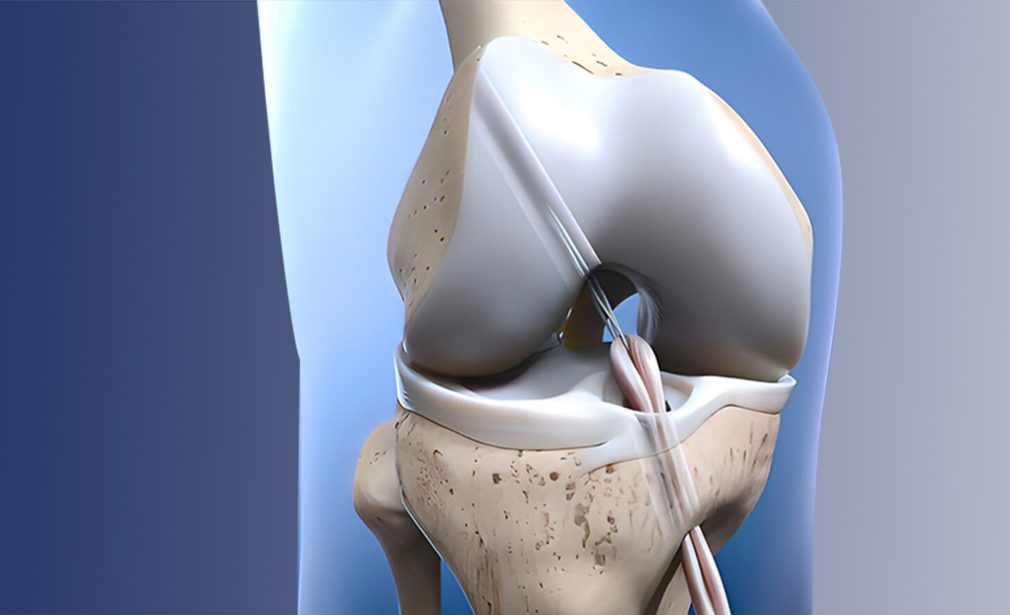An Anterior Cruciate Ligament (ACL) injury involves damage to one of the key ligaments in the knee, often resulting from sudden stops, changes in direction, or jumping activities. This injury is prevalent among athletes participating in sports such as soccer, basketball, football, and skiing.
The ACL is a strong band of tissue connecting the thigh bone (femur) to the shin bone (tibia). It plays a crucial role in stabilizing the knee by preventing the tibia from sliding out in front of the femur and providing rotational stability. An Anterior Cruciate Ligament (ACL) injury is a common knee injury, especially among athletes. Recognizing the symptoms can lead to prompt diagnosis and treatment. The eight most common symptoms include:
- Many individuals report hearing or feeling a "pop" in the knee at the time of injury.
- Intense pain in the knee, often preventing the continuation of the activity at the time of injury.
- Swelling around the knee joint within a few hours after the injury.
- Difficulty fully extending or bending the knee due to pain and swelling.
- A feeling of the knee "giving way" or being unstable, especially when bearing weight.
- Tenderness along the joint line or over the area of the ligament.
- Discoloration or bruising around the knee joint.
- Challenges in walking or bearing weight on the affected leg due to pain and instability.
Frequently asked questions
An Anterior Cruciate Ligament (ACL) injury is a common knee injury, especially among athletes. Understanding the surgical treatment options and recovery process is crucial for effective rehabilitation. Here are some frequently asked questions (FAQs) about ACL surgery:
The ACL is a ligament in the knee that provides stability, particularly during activities involving sudden stops or changes in direction. An ACL injury occurs when this ligament is torn or sprained, often due to sports-related activities
Diagnosis typically involves a physical examination, where the doctor may perform specific tests to assess knee stability. Imaging studies, such as MRI scans, are often used to confirm the diagnosis and evaluate the extent of the injury.
Surgical intervention is generally recommended for individuals who:
Engage in high-demand sports requiring pivoting or jumping.
Experience knee instability during daily activities.
For those with a sedentary lifestyle or low activity demands, non-surgical treatments like physical therapy may be sufficient.
Recovery varies among individuals but generally includes:
Initial Phase (0-2 weeks): Focus on reducing swelling and regaining knee motion.
Intermediate Phase (2-6 weeks): Begin weight-bearing activities and strengthening exercises.
Advanced Phase (6-12 weeks): Progress to more dynamic activities and sport-specific training.
The timeline for returning to work depends on the nature of your job:
Sedentary Jobs: May return after 7 days.
Physically Demanding Jobs: May require 4-6 weeks or more.
It’s essential to consult with your healthcare provider to determine the appropriate return-to-work schedule based on your specific situation.
Driving is generally not recommended until you can safely control the vehicle, which may take several weeks. This depends on your recovery progress and the leg operated on. Consult your surgeon for personalized advice.
Preventive measures include:
Engaging in neuromuscular training programs to improve balance and coordination.
Strengthening the muscles around the knee.
Using appropriate footwear.
Avoiding sudden changes in activity levels.


